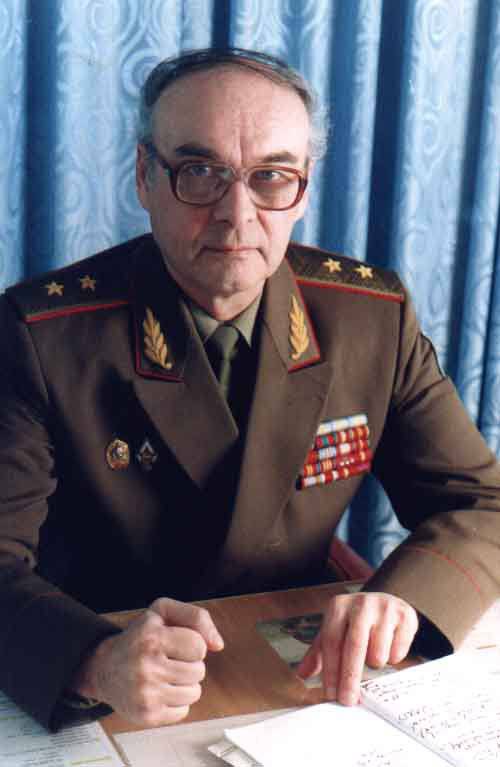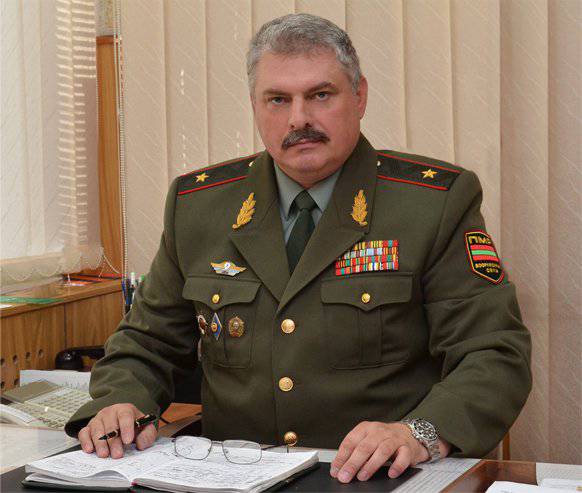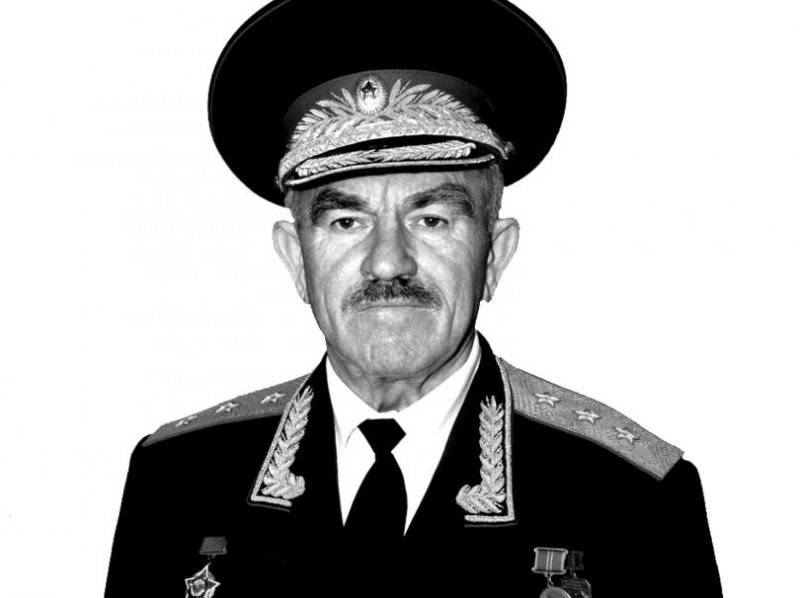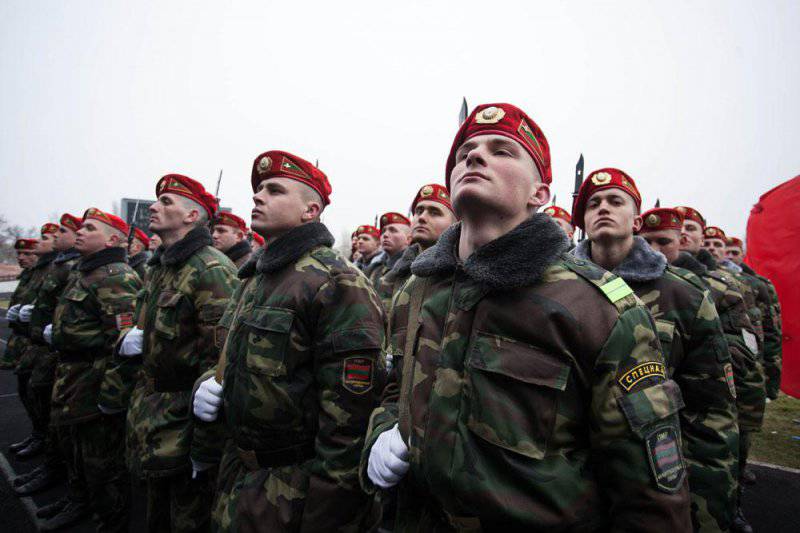Armed Forces of Transnistria: 23 of the year since its foundation
History The Armed Forces of the Pridnestrovskaia Moldavskaia Respublika (hereinafter referred to as the Supreme Council of the Transdniestrian Republic) began in 1991. For Transnistria, the start of the 1990s was particularly severe. Here, on the once peaceful land, a real war broke out between Moldovan police forces and volunteers who defended their right not to remain in the nationalist Moldovan state. It was 6 of September that 1991goda of the PMR Supreme Council adopted a decree “On measures to protect the sovereignty and independence of the republic”, which marked the beginning of the construction of the armed forces of sovereign Transnistria. Up to this point in Transnistria there existed militia assistance detachments (ROSM), on which the entire burden laid down to ensure public order and protect the Russian and Russian-speaking population during the 1990-1991 period, when in the then Moldavian SSR the pro-Romanian Moldavian nationalism lifted its head (although it can be called Moldovan, with very large reservations, since the majority of Chisinau’s nationalist leaders denied the Moldovan people and Moldovan language the right to exist, arguing that Moldovans are Romanian, Moldovan is Romanian, and Moldova is a historical part of the Romanian state).
It was the workers' detachments that became the direct basis for the formation of the Transdniestrian Republic Guard (Republican Guard) - the armed militia, which played a key role in repelling the attacks of the Moldovan formations and defending the state sovereignty of the Pridnestrovskaia Moldavskaia Respublika. Another predecessor of the Transdnistrian Armed Forces is, in part, territorial-rescue detachments - civil defense and emergency subunits, created by 11 in February 1991 in February and intended to eliminate the consequences of emergency situations.
Responsibilities for the direct creation of the Republican Guard, the Supreme Council of the PMR, entrusted to the Committee on Defense and Security, which was then led by V.M. Rylyakov. It was to his competence that the decree of the Supreme Council was 24 of September. 1991 of the year was devoted to issuing orders for the establishment and strengthening of the Republican Guard. 26 September 1991, the first order of the Chairman of the Committee of Defense and Security to the post of deputy commander of the Republican Guard was Colonel S.G. Borisenko. He temporarily took up the duties of the commander. The decision of the Committee of Defense and Security initially decided to create three battalions of the Republican Guard - in the cities of Tiraspol, Bender and Rybnitsa, as well as a separate company in the city of Dubasari. On the basis of the latter, the 4 Motorized Rifle Battalion was subsequently deployed.
September 30 1991 was appointed the commander of the Republican Guard of the PMR by S.F. Kitsak. Unfortunately, the now deceased Stefan Kitsak (1933-2011) was a professional military officer — a Soviet officer who had passed through Afghanistan and had retired from 1990 in the city of Tiraspol as deputy chief of staff. A native of the village of Ostrytsia, which was part of the year of his birth as part of Romania, and now belonging to the Chernivtsi region of Ukraine, Stefan Kitsak was educated at the pedagogical school of Chernivtsi, worked as a mathematics teacher at school, then was called up for military service and sent to study at the Vinnytsia machine gun school.
Then there were years of military service at the posts of platoon commander, company, study at the Military Academy. Mv Frunze, again the command of the motorized rifle battalion, motorized rifle regiments in Hungary, Czechoslovakia. Over the decades of service, Stefan Kitsak managed to make war with the remnants of Bandera gangs in Western Ukraine, to participate in the Czechoslovak events of 1968, from 1980 to 1989. fulfill the duty of the internationalist warrior in Afghanistan, where he was deputy chief of staff of the 40 Army. In 1991, 58-year-old Stefan Florovich, who had just retired, led the Transdniestrian Republican Guard. The high military professionalism of Stefan Kitsak is evidenced by the fact that less than two months after his appointment as commander of the newly formed Guard of the Transdnistrian Moldavian Republic, the units of republican guardsmen have already been deployed for combat duty.
13 March 1991 of the PMR Guard took part in the first large-scale clash, repelling the attack of Moldovan units on the city of Dubossary. However, the hottest period in the history of the PMR Guard was in March - July 1992 of the year, that is, on the days, weeks, and months of the conflict that went down in history as the War in Transnistria. The aggression of Moldova against Transnistria in March 1992 forced the Transnistrian leadership, in addition to the Republican Guard, to form the People’s Militia, which became a worthy reserve and an assistant to the guards. An important role in the battles against the Moldovan troops was also played by paramilitary forces created on the basis of territorial rescue units. The first such formation appeared 20 March 1992 in Dubossary and consisted of 13 civilians armed with 4 machine guns. Initially, the tasks of the detachments included the rescue of civilians from the shelling and from the occupied territories, but then they became a prototype for special forces and after the war ended became the basis for the created border detachment and the special forces unit Delta.
The fighting against the Moldovan aggressors lasted for five months, as a result of which the Transnistrian guards, the militia, who came to the aid of the Cossacks of the Black Sea Cossack troops and the Cossack troops of Russia, managed to defend the sovereignty of the republic. An important role in the victory over the Moldovan troops was also played by the presence on the territory of the Transdniestrian Republic the units of the Russian 14 Army, commanded by General Alexander Lebed at that time, are still respected by the residents of Transnistria for the support rendered to the Transnistrian militia. After the 21 July 1992 in Moscow signed an agreement “On the principles of peaceful settlement of the armed conflict in the Transnistrian region of the Republic of Moldova”, the Republican Guard units returned to their daily service and combat activities.
The existence of a threat of constant renewal of the armed conflict, since in Moldova nationalist and revanchist sentiments do not subside throughout all the more than twenty years of post-Soviet history, forced the Pridnestrovian Moldavian Republic to maintain high discipline, fighting spirit and training of its armed forces. The “founding father” of the Transnistrian armed forces, Stephen Kitsak, was appointed Chief Military Inspector of the Republic’s Armed Forces in September 1992, who remained in his post until the end of his days. Then, in September 1992, the process of transforming the Republican Guard into the Armed Forces of the Pridnestrovskaia Moldavskaia Respublika began. 14 March 1993, the personnel of the Armed Forces of the PMR was taken to military oath.
From 8 September 1992 to 2012, the Ministry of Defense of the PMR was headed by Stanislav Galimovich Khazheev (river 1941). Like Stefan Kitsak, Stanislav Khazheev, now occupying the post of chief military inspector of the Transdniestrian Armed Forces, is a professional military of the Soviet school. He graduated from the Tashkent Higher Combined-Arms Command School and the Military Academy. Mv Frunze, served in various command positions in the Soviet Army - from the platoon commander to the chief of staff of the division, served in Vietnam as a military adviser to the army corps. In the Armed Forces of the Transdnistrian Moldavian Republic, Khazheev began his service from the time of their establishment and was initially deputy head of the Transdniestrian Defense Department.

It was during the years of the “ministry” of Stanislav Galimovich Khazheev that the Transdniestrian Republic Armed Forces acquired their modern outlines. Today, the Armed Forces of Transnistria are significantly superior to the Moldovan army in terms of equipment, personnel training, and morale of servicemen. Affects the construction and training of soldiers and officers of the Armed Forces of the PMR in accordance with the norms of the old Soviet military school, participation in the formation of the Armed Forces of officers and generals of the old school. The latter actively pass on their experience to the younger generations of Transnistrian soldiers.
In the Pridnestrovskaia Moldavskaia Respublika, there is a one-year universal conscription. Also, part of the military service is under contract military service. Despite the fact that the number of armed forces of the country is 7,5 thousands of troops, and with the units of the border troops, special forces and Cossacks - about 15 thousands, in the event of hostilities, a reserve of up to 80 thousands of soldiers and officers who have undergone military training can be mobilized. The structure of the Armed Forces of the PMR includes four motorized rifle brigades deployed in the cities of Tiraspol, Bender, Dubasari and Ribnita. Brigades consist of motorized rifle battalions. Each battalion includes 4 motorized rifle companies, a mortar battery and separate units (platoon) - communications, engineering and sapper. The motorized rifle company has three platoons of 32 men (3 units) in each.
PMR has tank a battalion and 18 tanks (in reality, there are significantly more tanks, since several dozen tanks are in the hangars and can be put into battle after a short repair if an appropriate situation arises), own aviation with six combat helicopters (the total number of aircraft - airplanes and helicopters - reaches 15 pieces). The PMR is armed with 122 artillery systems, including 40 Grad multiple launch rocket systems, 30 howitzers and cannons, SPG-9 easel anti-tank grenade launchers, RPG-7, RPG-8, RPG-22, RPG-26 and RPG-27 grenade launchers, MANPADS “Igla”, ATGM “Baby”, “Bassoon”, “Competition”.
In wartime, special forces of the State Security Committee of the Transdnistrian Moldavian Republic are also taking operational control of the Armed Forces of the Transdnistrian Moldavian Republic. Spetsnaz of the KGB is the Center for Special Operations "Vostok", whose duties include anti-terrorism and counter-sabotage activities, rendering assistance to border guards in guarding the state border. Since 2012, this is the name of the legendary Separate Special Purpose Battalion “Delta”, which has existed since 1992, and participated in the heroic battle in Bender 19-21 in June 1992, in many other special operations.
Building our own Armed Forces and maintaining them in constant combat readiness demanded from the Pridnestrovskaia Moldavskaia Respublika and careful attention to the training of future professional military personnel. Another 7 in May 1993 was established at the Transnistrian State-Corporate University, a military department, whose duties included the training of reserve officers, which could be used in the case of mobilization to replace junior officer positions. The training of "storekeepers" was carried out by experienced officers who served in the Soviet Army. 31 March 1998, as the need for junior officers was growing, a training course for platoon commanders was established. They were initially trained not only by commanders of motorized rifle and artillery platoons, but also by communications specialists and deputy commanders of companies for educational work. December 17 1998, the first graduation of the training course for platoon commanders took place. Since 2007, not only junior officers have been trained in courses, but also technicians and petty officers and batteries with the rank of ensigns. Soon, the training courses for platoon commanders were renamed Junior Officers and Ensign Training Courses.
In 2008, the Military Institute of the Ministry of Defense of the PMR was established at the Pridnestrovian State University. T.G. Shevchenko, with 2012, bearing the name of Lieutenant-General Alexander Ivanovich Lebed. The Military Institute trains officers with higher civil and secondary military vocational education. Also, the Military Institute is charged with the training of reserve officers from among civilian students of Transnistrian State University. T.G. Shevchenko.
Personnel in the Military Institute are trained in the specialties of “command and control of military units (motorized rifle and tank troops),” “use of artillery units” and “educational work in the ground forces”. Reserve officers from among civilian students are trained in the following specialties: “platoon commander of antiaircraft artillery”, “commander of an engineering sapper platoon”, “commander of a communications platoon”, “military and extreme medicine”. After graduation, future officers undergo training camps. All those who have completed the course are assigned the military rank of “lieutenant”. 18 July 2012. The first graduation of the Military Institute took place - the Armed Forces of the MRT joined the young lieutenant with the 61.
For those who already in their teens decided to choose a military profession, in 2008, the Republican Cadet Boarding School named after Felix Edmundovich Dzerzhinsky opened. Here, in addition to school-wide studies, the cadets also study the basics of military disciplines, master fire and physical training. As a rule, among the cadets, the children of professional servicemen predominate, choosing the example of their fathers.
However, there are certain problems faced by the modern Transnistrian army. First of all, we are talking about fairly significant emigration of Transnistrians, especially young people, including those of military age, to the Russian Federation in search of work. Accordingly, the Armed Forces are losing many potential military personnel. Secondly, the question remains with the material support of the Transnistrian army. Since it is difficult to call a republic a rich state, its general financial situation also affects the level of financing of the Armed Forces. Insufficient funding, in turn, affects the level of armament of the Transnistrian army. Although, as experts note, it clearly clearly surpasses the Moldovan armed forces in its combat potential, it is clear that its military-technical component needs to be gradually upgraded due to the supply of modern weapons. All this requires an infusion of financial resources, with which the Pridnestrovian Moldavian Republic is not so good.
In 2012, after the removal of the post of the Minister of Defense of the PMR of 70-year-old Colonel-General Khazheev, Colonel Alexander Lukyanenko was appointed as the new Minister of Defense of the Pridnestrovskaia Moldavskaia Respublika, who was soon appointed to the post of Minister. Although Alexander Alekseevich Lukyanenko is much younger than his predecessors at the ministerial post of Kitsak and Khazheev, he also belongs to the regular Soviet officers. Alexander Lukyanenko was born in 1961, in 1982, he graduated from the Tashkent Higher All-Arms Command School. IN AND. Lenin.

In the Soviet Army, Alexander Lukyanenko served as commander of a motorized rifle platoon, commander of a motorized rifle company, deputy chief of staff of a tank regiment, chief of the 2 branch of the Dubossary district military commissariat. After the proclamation of the sovereignty of the Pridnestrovskaia Moldavskaia Respublika, Alexander Lukyanenko commanded the 4-th separate motorized rifle battalion of the Republican Guard, was the commander of a separate motorized rifle brigade, head of the service of the Ministry of Defense of the PMR. He was appointed to the post of Minister of Defense from the post of Deputy Minister of Defense for combat training.
The Chief of the General Staff of the Transdniestrian Armed Forces - the first deputy minister of defense of the country since July 3 2013 is Colonel Oleg Vladimirovich Gomenyuk - also a career Soviet officer. He was born in 1960 year, graduated from the Leningrad anti-aircraft missile military school and from 1982 to 1992. served in the Trans-Baikal Military District and the Group of Soviet Forces in Germany. From 1993, he entered the service of the Transdniestrian Armed Forces, where he went from the deputy commander of an anti-aircraft missile regiment to the air defense chief of the Transdnistrian PMR. Thus, we see that officers of the old Soviet military school still continue to serve in command positions in the Transdniestrian Armed Forces and their combat and life experience is a good help in further building and developing the army of a small republic on the banks of the Dniester.
In the conditions of the modern military-political situation in Eastern Europe, first of all in Ukraine and Novorossia, the need to further strengthen the Transdniestrian Armed Forces, raising the level of their combat training, and the military spirit of military personnel is being actualized. For understandable reasons, today Transnistria can at any moment expect repeated acts of aggression - this time not only from Moldova and Romania behind it, dreaming of territorial expansion, but also from the Kiev regime in Ukraine.
For the pro-Western elements who seized power in Ukraine at the beginning of 2014, the Transnistrian Moldavian Republic is one of the most likely opponents and object of hatred. After all, the PMR is not only a stronghold of pro-Russian sentiments near the south-western borders of Ukraine, but also an example of the long-term existence of an unrecognized republic, which is extremely important for modern belligerent New Russia. Also, the Kiev junta is very much afraid of the creation of Novorossia from the borders of Donetsk and Lugansk republic to Transnistria - across the entire strip of the South and East of Ukraine, including the Crimea, Kherson, Nikolaev, and Odessa regions. For the Kiev regime and the pro-Western Moldovan authorities, such a project, if implemented, seems to be a real nightmare, since it cuts off the Black Sea region, the industrial Donbass from Ukraine, deprives Moldova of hopes for the return of Transnistria and thus turns the remnants of the former Moldavian and Ukrainian SSR into marginal states, not interesting even to former European and American patrons.
Moreover, it is known that people from Transdniestria as volunteers assist the Donetsk and Luhansk people's republics in their opposition to the aggression of the Kiev regime. Suffice to say that the legendary Lieutenant General Vladimir Y. Antyufeev, a veteran of the Soviet police, and then Transnistrian state security bodies, who served as the minister of state security of Transnistria for twenty years and who is a highly qualified specialist in the field of law enforcement and counterintelligence structures, came to the aid of the DPR. In the Donetsk People's Republic Antyufeev became deputy chairman of the Council of Ministers. Other Transnistrian soldiers are also present in the authorities and militia of the DPR.
Therefore, rumors that the Kiev regime, if successful in New Russia, will immediately open the southwestern front, may not be an exaggeration. Indeed, the junta fears both assistance to the militias from Transnistrians and the presence of a pro-Russian public entity in the immediate vicinity of Odessa, also a potentially volatile region with a Russian-speaking population. At the same time, since the USA and their satellites from NATO and the European Union are currently behind both Ukraine and Moldova, in the event of an attempt to return to a forceful “solution to the Transnistrian issue”, the West will prefer to act not only by Moldova. The overt weakness of the Moldavian army, low fighting spirit, the poorest standard of living of the Moldovan population in Europe - all this does not play out for the best in the event of a possible confrontation with the MRT. Needless to say, the economic situation in Transnistria, which of course cannot be called prosperous, is in any case several times better than the situation of neighboring Moldova, and now of Ukraine, affected by the war with Novorossia and the devastation that followed the assertion of the pro-Western junta.
Therefore, if the West, with the hands of its Eastern European satellites, tries to attack Transnistria, Moldova will act in coalition with Ukraine and Romania. But in any case, even for these countries that are many times superior to the Transdnistrian Moldavian Republic, the militant republic can turn out to be a very tough nut to crack. Especially if we take into account that in Transnistria there still remain warehouses of the 14 Army, on which weapons can be used in the interests of the Transnistrian people. Moreover, the PMR also has its own enterprises in Bender and Rybnitsa, which produce rocket launchers and mortars. Some experts argue that stocks of ammunition and weapons on the territory of Transdniestria will be enough for combat operations for two years. And this is even if we exclude the possibility of organizing the supply of weapons from other sources.
Thus, we see that the Pridnestrovskaia Moldavskaia Respublika remains an important stronghold of the Russian world and Russian geopolitical interests in Eastern Europe. It remains to hope that in the difficult contemporary political situation of Transnistria the fate of the former Eastern Ukraine and the opponents surrounding the small republic will not dare to attack it. And the most important role in “scaring off” enemies from the borders of Transnistria, for 23 years, belongs to its Armed Forces - the pride of the republic, born in battles for its independence.


Information